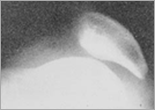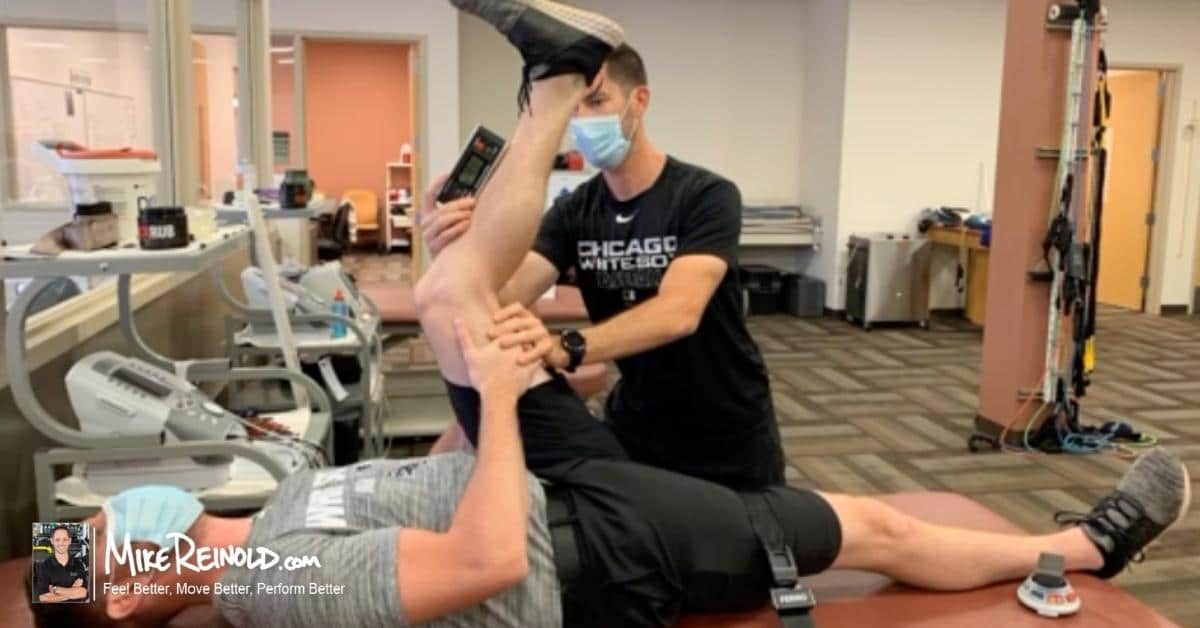
By far the most critical component of treating the patellofemoral joint is an accurate diagnosis. I will always challenge me students in this regard – find the cause of their symptoms and STOP using “patellofemoral pain” as a diagnosis. At first this can seem like a daunting task as the true source of patellofemoral pain can be misleading. However, using a classification system to group types of diagnoses can be extremely helpful in the formation of your treatment program.
The following is part 3 of the series on solving the patellofemoral mystery:
- Part 1: Introduction – Solving the patellofemoral mystery
- Part 2: What causes patellofemoral pain?
- Part 3: Differential diagnosis of patellofemoral pain
- Part 4: Principles of patellofemoral joint rehabilitation
- Part 5: Specific treatment guidelines for patellofemoral pain
- Part 6: Biomechanics of the patellofemoral joint – clinical implications
- Part 7: Understanding the clinical implications of the kinetic chain: The influence of the hip and foot on the patellofemoral joint
Differential Diagnosis of Patellofemoral Pain
Patellar Compression Syndromes
Patellar compressive syndromes are described as pathologies involving excessive compression between the patella and the trochlea due to tight surround soft tissue. These can result in significant changes to the articular surfaces of the patella and trochlea over time. This can be broken down into two distinct types of compression syndromes:
- Excessive lateral pressure syndrome (ELPS). ELPS was originally described as occurring when the patella is overconstrained by soft tissue tightness, specifically t
he lateral retinacular tissue. The patient will exhibit a lateral tilted and/or shifted patella and decreased medial glide. There is often times medial discomfort as the medial retinacular tissue is stretched due to a laterally displaced patella. I often find palpating the medial patellofemoral ligament elicits a decent amount of discomfort. I believe proximal and distal influences in the kinetic chain also effect the alignment of the patellofemoral joint and can cause an ELPS-like syndrome, though through a different mechanism. This should be assessed and is discussed more below.
- Global patellar pressure syndrome (GPPS). GPPS occurs when there is a general and diffuse medial and lateral soft tissue tightness that re
sults in the patella being excessively compressed within the throclea. This is more commonly see after direct trauma, immobilization due to fracture, or knee surgery with the development of arthrofibrosis. Have you ever had a patient lose patella mobility after an ACL reconstruction? This is a good example of GPPS. These patients may also have decreased superior patellar mobility as the knee is immobilized in flexion.
Patellar Instability


Try this – perform patellar 
Biomechanical Dysfunction
The knee appears to take a good amount of stress when biomechanical faults are present both proximally and distally within the kinetic chain. Alterations in foot and ankle mechanics, hip strength, leg length discrepancy, flexibility deficiencies, and any combination of these factors can have a negative impact on the forces observed at the patellofemoral joint. Not only can biomechanical dysfunction lead to increased stress, it can also lead to chronic adaptations over time. Take for example someone with weak hip external rotation. This could lead to a dynamic inability to control the hip adduction and IR moment at the knee and cause the femur to rotate into internal rotation during activities. This will cause the patella shift laterally and can cause articular cartilage and soft tissue changes that will mimic a typical ELPS patient. You can loosen up the lateral soft tissue but without treating the true cause, the hip weakness, symptoms will continue to occur.
This will be discussed in greater detail in a future post in this series as this is an important factor to consider.
Direct Patellar Trauma

Patients in this classification can include bone bruises, articular cartilage lesions, and even fractures.
Soft Tissue Lesions
There are a few common soft tissue lesions that can occur to the patellofemoral joint. Accurate diagnosis of these syndromes usually involves direct palpation to these areas and a certain mechanism of trauma to the area.
Suprapatellar plica syndrome. The plica is an interesting and debatable structure. I have always been of the belief that plica is very individual and some people have larger synovial folds than others. Most common is the suprapatellar plica, which is located medial and superior to the patella. This structure gets tight against the femoral condyle as the knee flexes so repetitive activities such as bike riding can cause this.
- IT band friction. Similarly, ITB friction can occur laterally as the patellar tract of the IT band gets taught against the lateral femoral condyle during flexion.
- Fat pad syndrome. The fat pad of the knee is highly vascularized and has rich
nerve fibers. When a patients falls on their knee, they may inflame this structure. You can easily palpate on either side of the patellar tendon and find discomfort. Be sure to assure that you are not palpating the patellar tendon as treatment for this will vary.
- Medial patellofemoral ligament injury. This was previously discussed above, but realize that any issues with chronic ELPS or patellar instability will cause MPF ligament pathology.
Overuse Syndromes

Two types of apophysitis can occur in the knee. These are common in adolescents during growth spurts and in athletes participating in jumping sports. These can easily be palpated and may be seen I’m not a big fan of naming things after people as they don’t offer any description of what the pathology is so I will use two versions of the terminology.
- Traction apophysitis of the tibial tuberosity (Osgood-Schlatter).
- Traction apophysitis of the inferior patellar pole (Sindig-Larsen-Johansson).
As you can see, there are many different pathologies that can occur to the patellofemoral joint. The above list is not intended to be all-encompassing, but rather to create categories of diagnoses that share similar treatment guidelines. There are other potential source of PF issues, including neurologic origins from the lumbar spine or reflex sympathetic dystrophy, however I wanted to keep this discussion orthopedic. Once I rule out orthopedic issues I will explore other origins and a likely referral back to the doctor or specialist.
To vaguely classify each patient as “patellofemoral pain syndrome” would be doing a disservice to the patient and will likely not result in optimal outcomes. A clear and accurate differential diagnosis is by far the most important aspect of treating the patellofemoral joint.
Next time a patient comes to you with a referral stating “PFPS” or “anterior knee pain,” I challenge you to attempt to classify the patient appropriately. Treatments will vary greatly for each diagnosis. These will be discussed in a future post.
Continue on to Part 4: The 10 Principles of Patellofemoral Rehabilitation
Wilk KE, Davies GJ, Mangine RE, Malone TR. (1998). Patellofemoral disorders: a classification system and clinical guidelines for nonoperative rehabilitation. JOSPT DOI: 9809279
Sign up for my FREE newsletter for even more great content!


 he lateral retinacular tissue. The patient will exhibit a lateral tilted and/or shifted patella and decreased medial glide. There is often times medial discomfort as the medial retinacular tissue is stretched due to a laterally displaced patella. I often find palpating the medial patellofemoral ligament elicits a decent amount of discomfort. I believe proximal and distal influences in the kinetic chain also effect the alignment of the patellofemoral joint and can cause an ELPS-like syndrome, though through a different mechanism. This should be assessed and is discussed more below.
he lateral retinacular tissue. The patient will exhibit a lateral tilted and/or shifted patella and decreased medial glide. There is often times medial discomfort as the medial retinacular tissue is stretched due to a laterally displaced patella. I often find palpating the medial patellofemoral ligament elicits a decent amount of discomfort. I believe proximal and distal influences in the kinetic chain also effect the alignment of the patellofemoral joint and can cause an ELPS-like syndrome, though through a different mechanism. This should be assessed and is discussed more below. sults in the patella being excessively compressed within the throclea. This is more commonly see after direct trauma, immobilization due to fracture, or knee surgery with the development of arthrofibrosis. Have you ever had a patient lose patella mobility after an ACL reconstruction? This is a good example of GPPS. These patients may also have decreased superior patellar mobility as the knee is immobilized in flexion.
sults in the patella being excessively compressed within the throclea. This is more commonly see after direct trauma, immobilization due to fracture, or knee surgery with the development of arthrofibrosis. Have you ever had a patient lose patella mobility after an ACL reconstruction? This is a good example of GPPS. These patients may also have decreased superior patellar mobility as the knee is immobilized in flexion. Suprapatellar plica syndrome. The plica is an interesting and debatable structure. I have always been of the belief that plica is very individual and some people have larger synovial folds than others. Most common is the suprapatellar plica, which is located medial and superior to the patella. This structure gets tight against the femoral condyle as the knee flexes so repetitive activities such as bike riding can cause this.
Suprapatellar plica syndrome. The plica is an interesting and debatable structure. I have always been of the belief that plica is very individual and some people have larger synovial folds than others. Most common is the suprapatellar plica, which is located medial and superior to the patella. This structure gets tight against the femoral condyle as the knee flexes so repetitive activities such as bike riding can cause this. nerve fibers. When a patients falls on their knee, they may inflame this structure. You can easily palpate on either side of the patellar tendon and find discomfort. Be sure to assure that you are not palpating the patellar tendon as treatment for this will vary.
nerve fibers. When a patients falls on their knee, they may inflame this structure. You can easily palpate on either side of the patellar tendon and find discomfort. Be sure to assure that you are not palpating the patellar tendon as treatment for this will vary.

